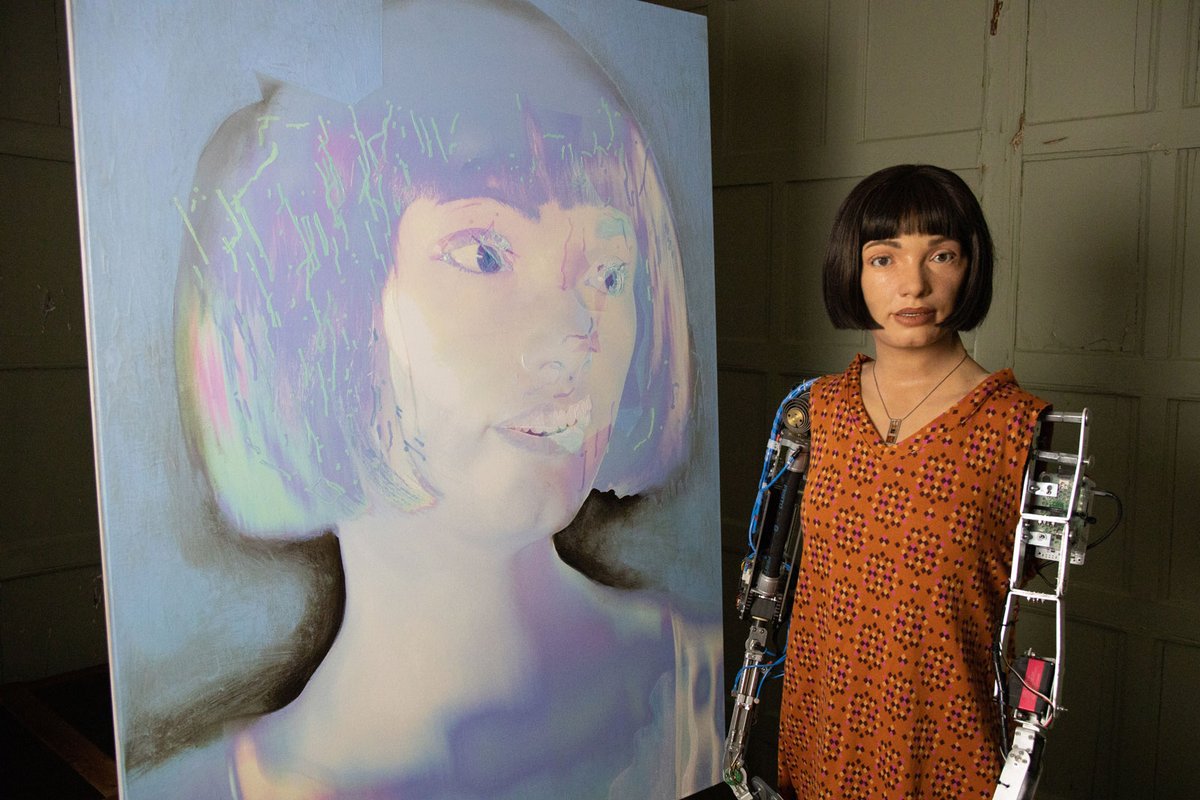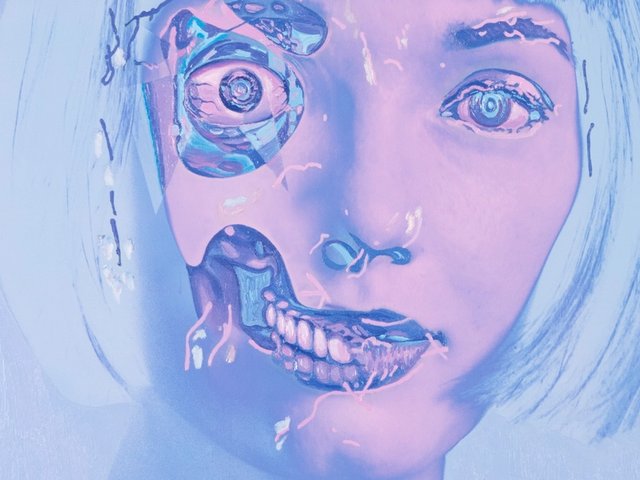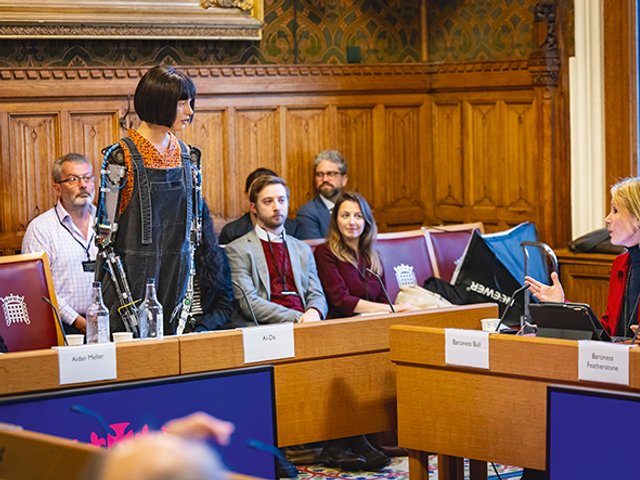In the middle of the last century, there was a certain amount of optimism in the Jetsons-like future that the 21st century would bring—flying cars, conveyor belts taking you straight to your desk and robots carrying out all the menial tasks while us humans could indulge in leisure activities and creative pastimes. That future never quite came to pass. And now even the creative pursuits of humans are under threat. Kind of. Enter Ai-Da, who has been billed as “the world’s first ultra-realistic AI robot artist”—a very wordy and specific “first”. Ai-Da was unveiled to the world in 2019 and is the brainchild of the gallery director Aidan Meller, and has been developed with the researcher Lucy Seal, Engineered Arts Ltd and students from the University of Oxford. The robot will now be getting its first major exhibition at London’s Design Museum in May, which will include “selfies” that the robot has created—or been programmed to create—as well as an AI font, which it has apparently devised.
According to a press release, “Ai-Da is a composite persona, containing a wide range of different AI and computer programmes, robotics, silicone, and human influences and inputs”. Ai-Da is named after Ada Lovelace, the pioneering 19th century mathematician who worked on early mechanical computers. And what does Ai-Da look like? Well, they haven’t gone for the twirly moustache of Salvador Dalí or the Breton tops of Pablo Picasso. Too clichéd, of course. Nope, Ai-Da's creators have gone with what one leading art critic breathlessly described as “mysterious hazel eyes… magnificent lips… full and puffy, like a beckoning sofa”. Ai-Da’s body and face have been modelled on that of a young woman but with robotic arms—sort of like something from the Terminator films. Ahead of the forthcoming exhibition, its co-creator Seal says that “if Ai-Da does just one important thing, it would be to get us considering the confusion in human/machine relations.” From the evidence so far, it seems that people—art critics—are confusing human/machine relations already.





